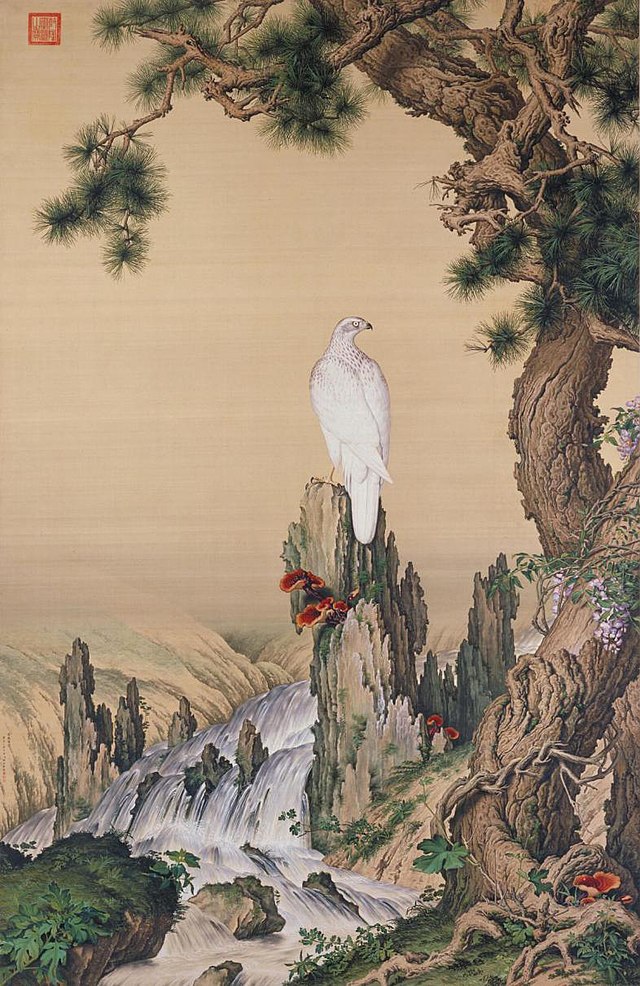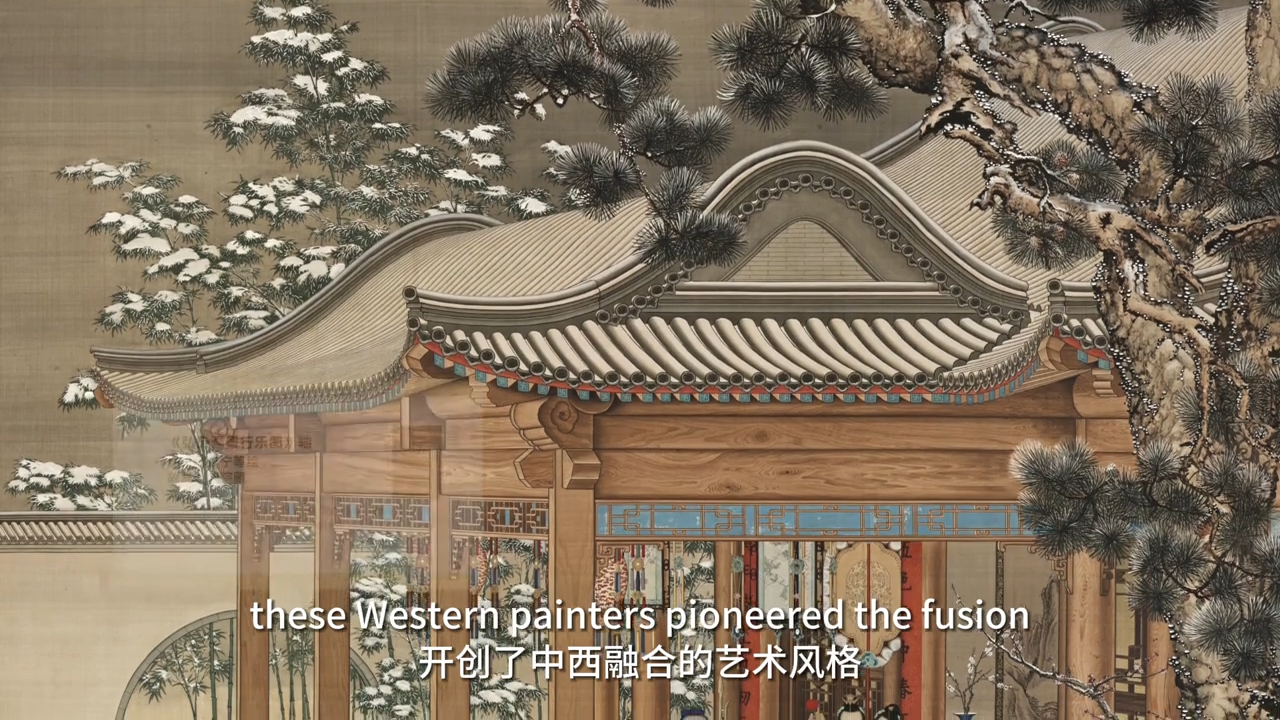Western Painting Techniques in Qing Dynasty Art
During the Qing Dynasty (1644-1911), the imperial court housed a unique collection of paintings. These works, created by European missionaries, showcased a blend of Eastern and Western artistic traditions. A significant example is the painting Pine, Hawk, and Lingzhi Fungus, completed in 1724 by Italian court painter Giuseppe Castiglione, also known as Lang Shining.

This artwork was a birthday gift for Emperor Yongzheng (r. 1723-1735). It features pine trees, a white hawk, and lingzhi fungus. In Chinese culture, these elements carry symbolic meanings, representing longevity and auspicious blessings. Castiglione skillfully merged traditional Chinese themes with Western painting techniques, such as point perspective, offering a fresh perspective on Chinese bird-and-flower paintings.
Introduction of Western Techniques in Qing Art
Lang Shining’s introduction of Western painting techniques significantly impacted Chinese art. This method, new to Chinese artists at the time, was also explored by Nian Xiyao (1671-1738). Inspired by Castiglione’s teachings on perspective and drawing, Nian wrote Principles of Visual Perspective (Shixue), a pioneering work on descriptive geometry in China.
Impact on Chinese Painting
Nian Xiyao’s contributions advanced the understanding of Western artistic methods in China. His work played a key role in the evolution of Chinese painting. It exemplifies the dynamic cultural exchange between China and the West during the Qing Dynasty.
Cultural Exchange and Artistic Fusion
The fusion of Western painting techniques with traditional Chinese practices revitalized the Chinese art scene. This synthesis showcased a rich interplay between Eastern and Western artistic traditions, breathing new life into Chinese art during this period.

